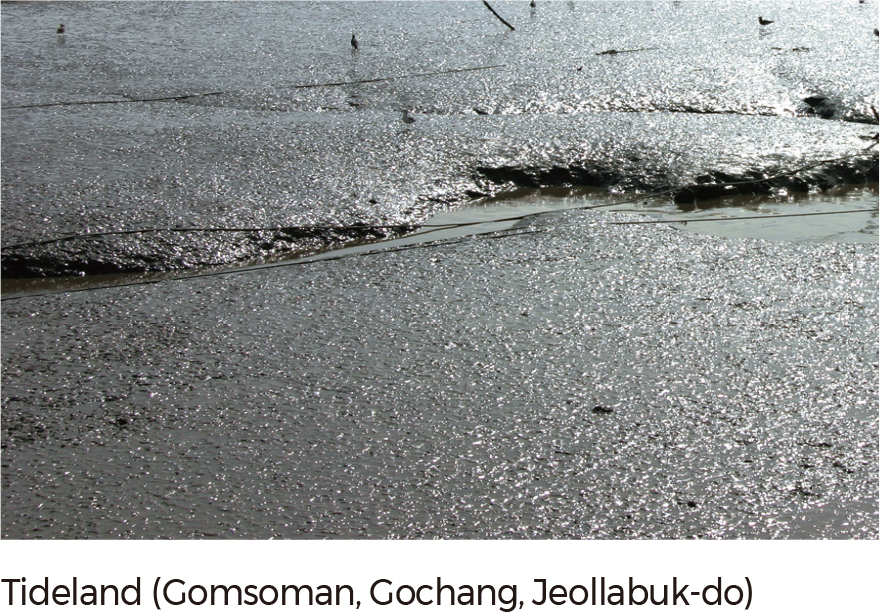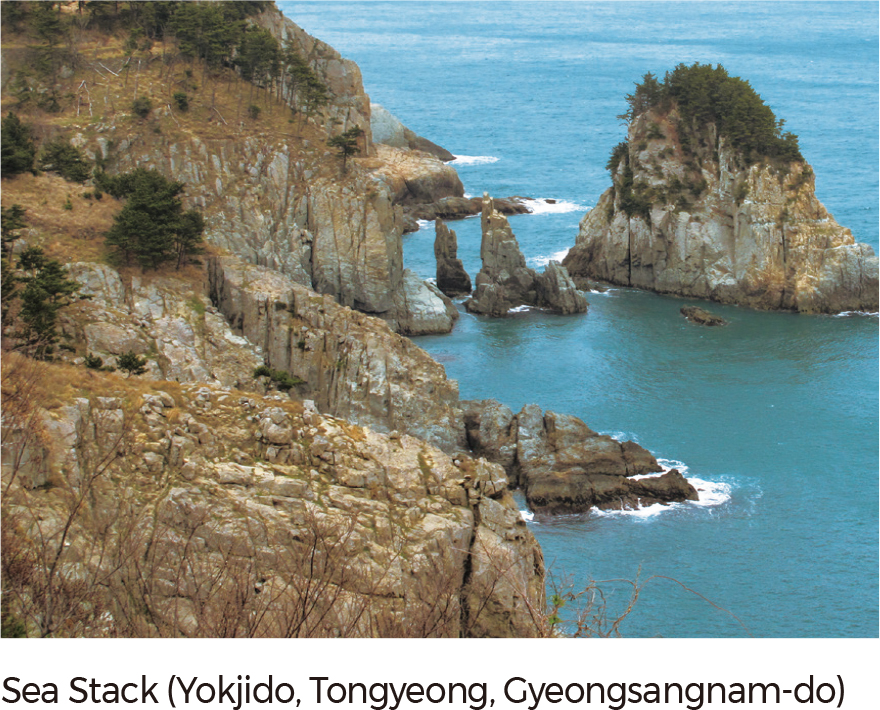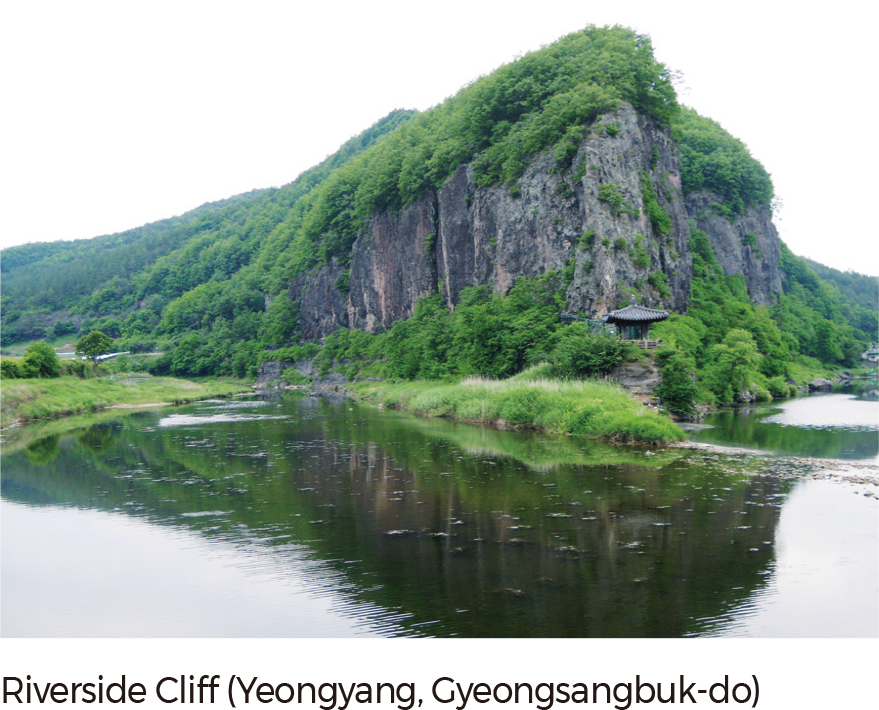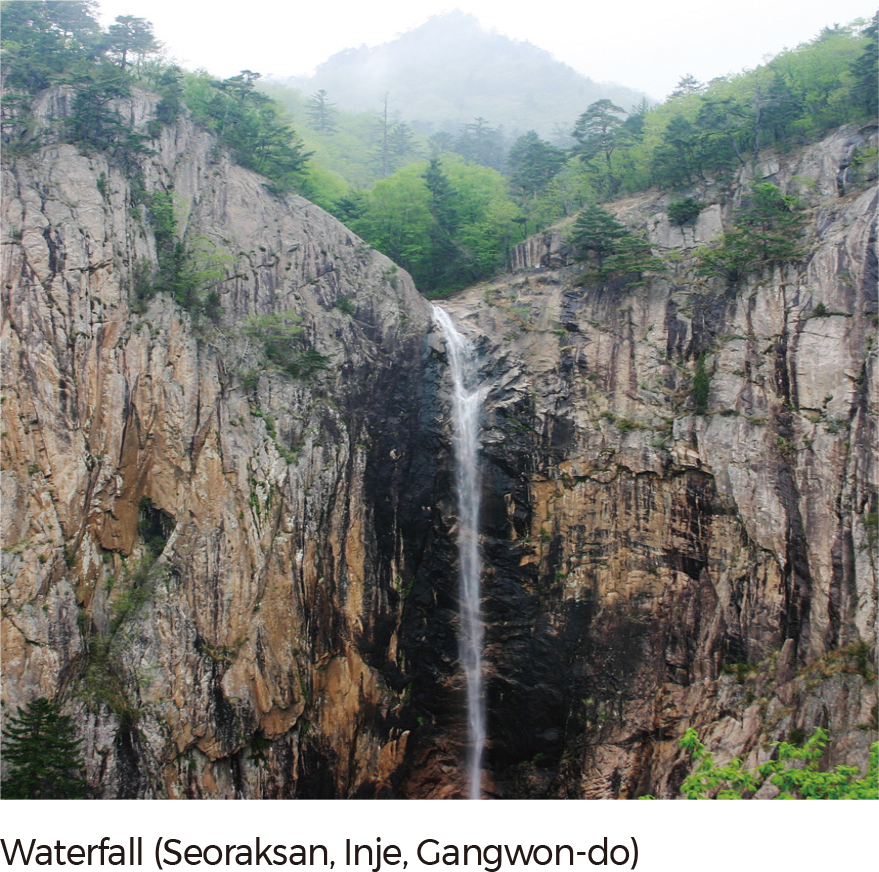Comprehensive Edition 2022
Coastal Landforms
Coastlines around the Korean Peninsula can differ markedly in appearance, with each stretch of coast exhibiting its own beauty. Rocky coasts with cliffs and towering sea stacks occur where waves and longshore currents have the strongest energy: on exposed headlands and along the East Sea where tectonic uplift has created high topographic relief. Sea cliffs, wave-cut platforms, and coastal terraces are also visible along the eastern coast of Korea.
Sandy beaches line the interior of bays and coves where lower wave energy allows currents to deposit sediment. Sandy coasts are more prevalent in the southern and western coastal areas, such as the Taean Peninsula where onshore winds have deposited a series of dunes and swales.
Muddy coasts are found along the western and southern coasts where flood and ebb tides are farther apart, wave activity is weak, and silt-sized particles are deposited. The largest tidal flats occur in Gyeonggiman (Gyeonggi Bay), where the tidal range is as large as 8–10 m. First-grade coastal landforms are evenly distributed along the coastline, mainly around relatively less-developed islands.
Fluvial Landforms
Rivers in Korea are classified as straight, meandering, or braided. Straight rivers are bounded by exposed bedrock between narrow valleys and mounds, while meandering rivers develop on wide floodplains. Typical erosional landforms include waterfalls, potholes, riverine cliffs, and riverine caves, while typical depositional landforms are deltas, alluvial fans, point bars, and riverine wetlands.
The floodplains formed by Hangang, Nakdonggang, and Geumgang constitute major agricultural plains in South Korea. The natural levees and backswamps of these floodplains developed from the last glacial period; eroded valleys were filled with sediments due to rising sea levels. Where rivers meet a low-energy coast, deltas are formed, shaped by sediment discharge, ocean tides, and waves. Nakdonggang Delta is a representative example. Further upstream, alluvial fans can be deposited, with rich soils suitable for agriculture. |












